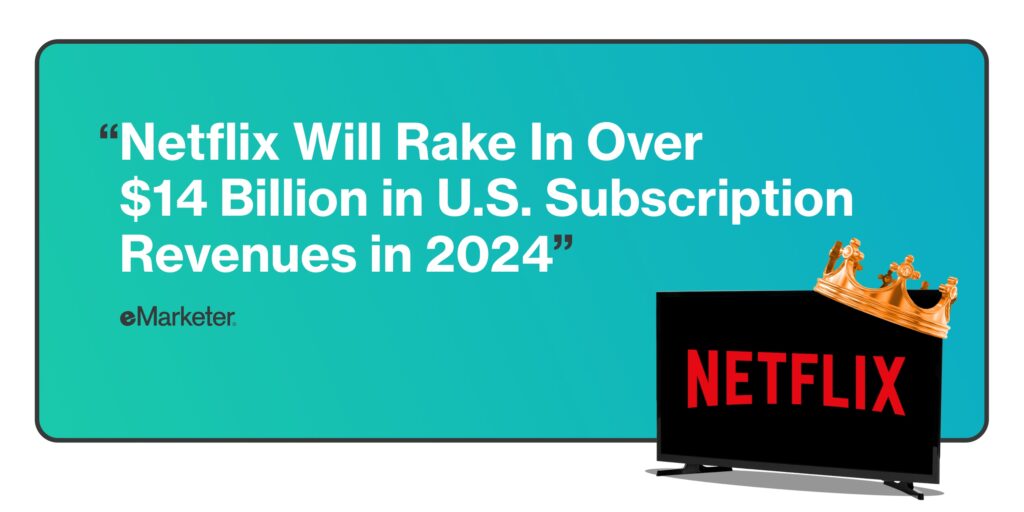CTV Retargeting 101: Complete Guide for TV Advertisers
by Frankie Karrer
8 Min Read
Check out Inc.’s excellent coverage on MNTN’s mission to make TV advertising impactful (and accessible) for all. Learn More

2 Min Read
As one of the first to enter the world of streaming, Netflix has long been the king of Connected TV. And this year, its success continues, generating more than $14 billion in revenue for American OTT subscriptions, according to eMarketer. That’s around a fifth of all subscription revenue — the only platform to come even close to that amount is Disney, and that’s with Disney+, Hulu, and ESPN+ revenues combined.
But while Netflix might be the reigning champ of the streaming world for now, its crown is getting a little loose. While the service’s revenues have been growing, its audience is saturated — reaching more than three-fourths of the entire American streaming subscription market. As a result, Netflix isn’t growing as fast as many of its competitors. By 2025, Netflix’s portion of the streaming revenue pie is expected to drop from 32.4% to 21.3%, with services like Paramount+ and Peacock muscling in on its share. Time will tell how Netflix tries to thwart this attempt on their throne, but with the service’s recent moves to add ad-supported streaming and cut down on password sharing, it’s clear that the streaming giant has a plan in place.

Americans Are Spending More on Streaming Each Month Than They Are on Gas
Marketing Brew
Americans are spending an average of $119.76 a month on streaming video services, more than the average $112.11 per month they spend on gas, according to a new report from streamer Tubi and The Harris Poll.
The Cost of Cord-Cutting: How Rising Costs Impact Viewer Habits
MNTN Research
As more audiences cut the cord and streaming began to overtake linear TV in viewership, shareholders were eager to start cashing in on the boom. But the increases haven’t stopped there.
The End of Peak TV
eMarketer
Just a few years ago, content production looked like a runaway train that couldn’t slow down. But with more production delays ahead, marketers will need to navigate the best way to reach consumers when new shows reach smaller audiences than they used to.